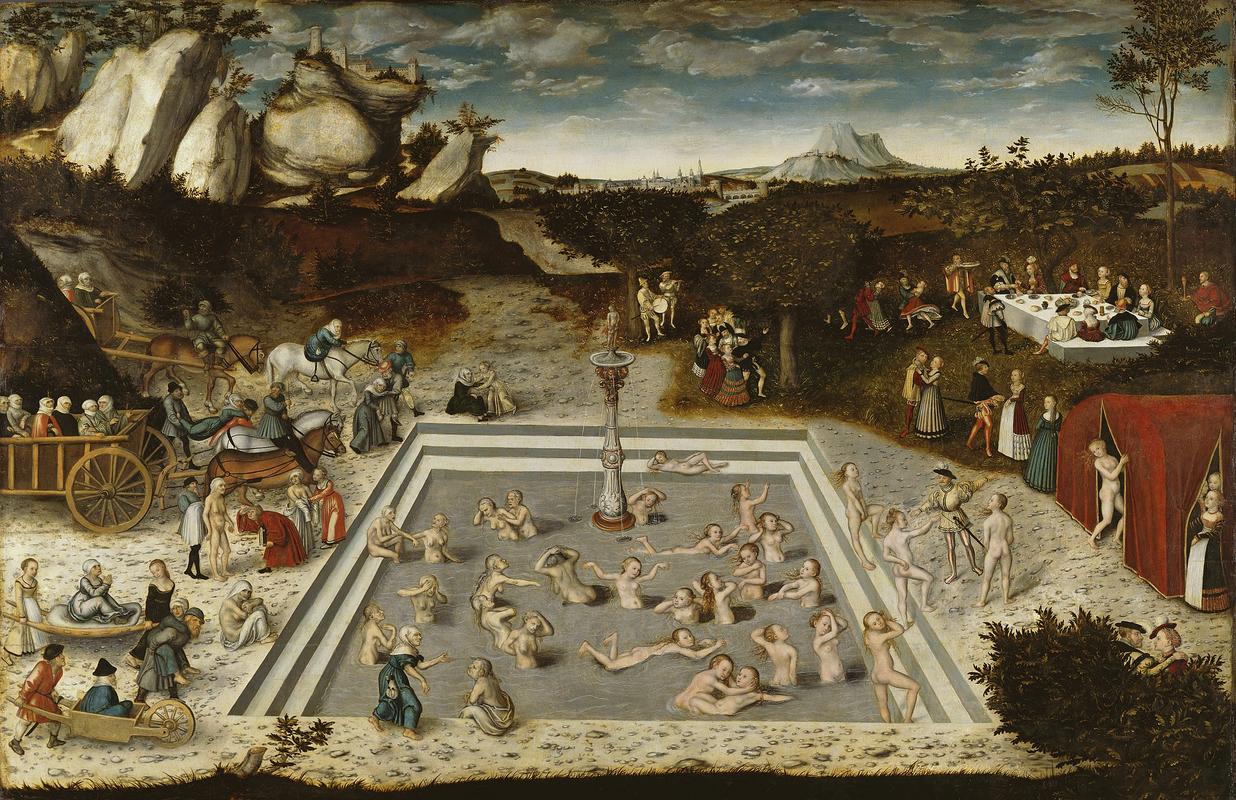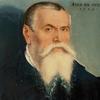More about The Fountain of Youth

Contributor
Lucas Cranach the Elder’s painting The Fountain of Youth makes us wish we’d brought our swimsuit.
On the left, old peasant women are being carted in on stretchers and in wheelbarrows. A doctor gives them a quick once-over and then they’re free to go for a splash in the fountain of youth. The ladies have a nice nude swim and then emerge from the other side of the pool wrinkle-free and fresh as daisies. The Californian in me thinks it must be coconut water and goji berries.
Once the transformed women are out of the water they are shown to the red tent to get dressed in exquisite finery. They then proceed to chow down, dance, enjoy the lush landscape, or go get frisky in the bushes with some beardy redheaded dudes. The barren and rocky wasteland on the left is a stark contrast to the jovial scene on the right.
The fountain itself features statues of Venus and Cupid, suggesting that the immortality given by the fountain of youth has some roots in love itself. Considering the blatantly obvious coupling up of the newly rejuvenated women with the men on the right, there must be a whole lot of love in the air (or water).
Cranach the Elder completed his painting in 1546 at the height of Europe’s frenzy for the legend of immortality. Spanish explorer Juan Ponce de Leon had gone on a journey to find the real fountain of youth just thirty years before Cranach’s painting, ending up in what is now Florida and subsequently heading back to Spain empty handed. Ironically, Florida is now colloquially known as the ‘retirement state’ and is full of other people who didn’t find the fountain of youth. Still, we don’t blame Cranach for failing to include a golf course and a couple of palm trees in his painting.
Featured Content
Here is what Wikipedia says about The Fountain of Youth (Cranach)
The Fountain of Youth is an oil-on-panel painting executed in 1546 by the German artist Lucas Cranach the Elder.
Check out the full Wikipedia article about The Fountain of Youth (Cranach)














